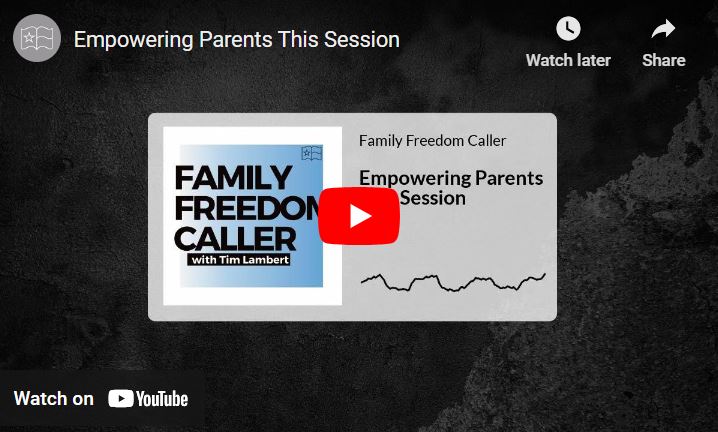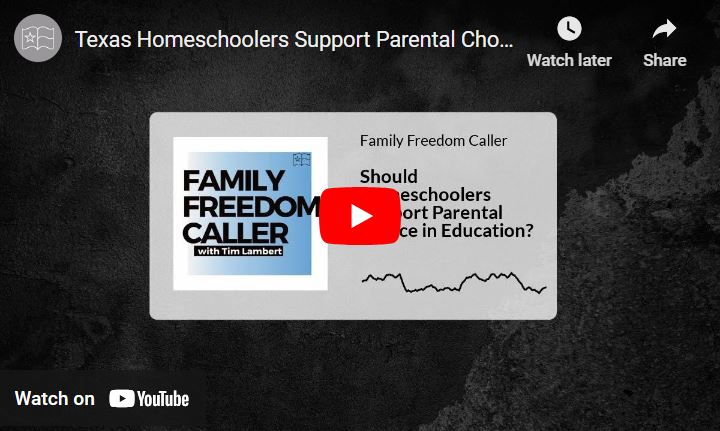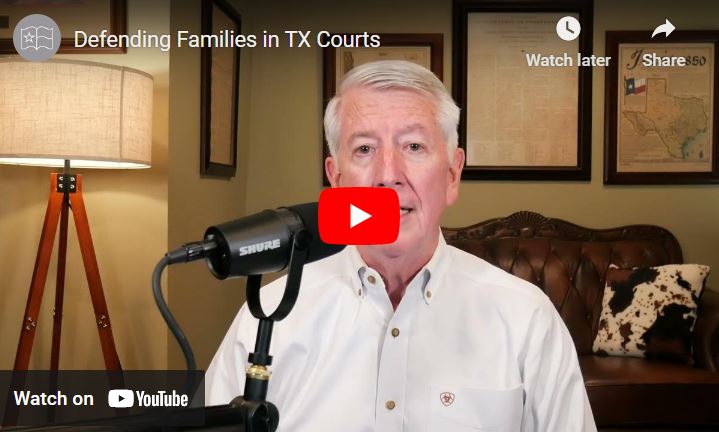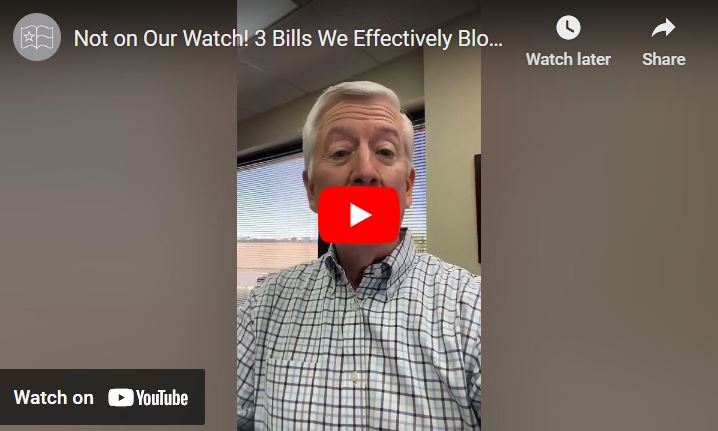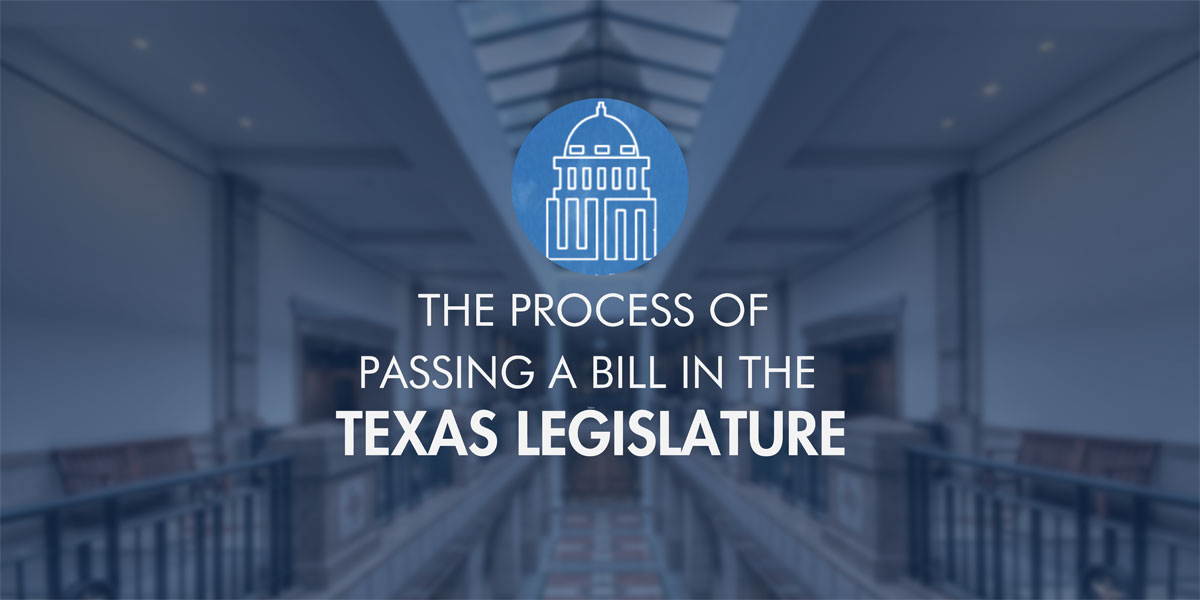
Passing a bill in the Texas Legislature is a lengthy process that requires many people to work long hours.
First the writing and then filing the bill, to lobbying. Then, to arguing for or against a bill. Then – if a bill survives – it is sent to the governor’s desk to be signed or vetoed. By that time, hundreds of hands have had a hand in it, all of them working on getting the bill over the next obstacle.
Let’s walk through the process of passing a bill together!
For brevity’s sake, we will follow the process of passing a bill in the House of Representatives. Remember that the process will vary slightly from passing a bill in the Senate. Keep in mind that there are two chambers of the Legislature, and a bill has to complete all the steps in each chamber before going to the governor.
Step one is introducing a bill. Only an elected legislator can file a bill.
As far as the THSC is championing, Rep. James Franks filed the amendment that would protect the fundamental right of parents to raise their children.
A bill can only be filed with the chief clerk of the House between the first Monday after the election and the first 60 calendar days of the session.
After a bill is filed, it is numbered, read into the official record, and assigned to the appropriate committee by the speaker of the House.
The next step is going to committee.
There are three different ways for a bill to be discussed while it is in committee:
- In a public hearing where testimony is heard.
- In a formal meeting where the committee may discuss and take official action.
- In a work session, the committee may discuss bills, but may not take formal action.
In his book, Congressional Government, A Study in American Politics, Woodrow Wilson wrote (in reference to the United States Congress), “Congress in session is Congress on public exhibition, whilst Congress in its committee-rooms is Congress at work.”
If the committee passes a bill, it goes to the calendars committee. That committee decides what bills to put on the calendar. But if the committee rejects the bill, the process ends.
Most bills will die in committee. This is called being “pigeonholed,” which means set aside and purposely forgotten. As an aside, the term pigeonholed comes from old roll-top desks, which had a series of pigeonholes into which papers could be placed and easily forgotten.
The next step is floor action! The bill is read a second time, and members can now debate it before voting on it. Debate is limited due to the large number of members, usually ten minutes per speech. Debates lead to amendments, then to the third reading. Most of the time, bills do not get amended but it is possible.
Suppose the bill passes on the third reading, in that case, it is engrossed, meaning it has been prepared in a final form for a vote of the Texas Legislature after it has been discussed and approved by the appropriate committees.
The bill is then sent to the opposite chamber (in our case, the Senate) to go through the same process with a few variations. If it survives the opposite chamber, it returns to its “originating” chamber.
If the members did not amend the bill in the Senate, or if it was amended and the House concurs with the changes, the bill is enrolled and sent to the governor. The term enrolled means the process of changing a bill passed by both chambers into its final format for transmission to the governor.
Suppose a bill is amended in the Senate and that the House disagrees with the changes, in that case, the originating chamber may request the appointment of a conference committee to resolve the differences between the House and Senate versions of the bill.
A conference committee brings together members from both chambers to reconcile the two chambers’ differences. Failure of the conference committee to reach an agreement means the bill dies.
But if both chambers accept the conference committee’s report, the bill is enrolled, and sent to the governor’s desk to sign.
The governor has three options on receiving an enrolled bill; (1) sign it, (2) allow it to become law without a signature, or (3) veto it. If either of the first two options occur, the bill becomes law.
Much of what we have discussed might seem laborious, repetitive, and unnecessary. But when the legislative process operates at its fullest potential, the whole system comes together in a beautiful display full of checks and balances. Learning about the process begs a deeper appreciation for all that goes into the laws that govern our great state.
Hopefully, this provided more insight into the Texas state’s legislative process. Please continue to support the THSC Watchmen’s work, Keeping Texas Families Free!
Sources:
Glossary of Legislative Terms – National Conference of State Legislatures
The Legislative Process in Texas – tasfaa.org
***
Ashlynn McFarland is the marketing intern for the Policy and Development team during the 2023 legislative session.
Ashlynn McFarland
Ashlynn McFarland is a K-12 homeschool graduate who served as the Marketing Intern for the THSC Watchmen during the last legislative session

Passing a bill in the Texas Legislature is a lengthy process that requires many people to work long hours.
First the writing and then filing the bill, to lobbying. Then, to arguing for or against a bill. Then – if a bill survives – it is sent to the governor’s desk to be signed or vetoed. By that time, hundreds of hands have had a hand in it, all of them working on getting the bill over the next obstacle.
Let’s walk through the process of passing a bill together!
For brevity’s sake, we will follow the process of passing a bill in the House of Representatives. Remember that the process will vary slightly from passing a bill in the Senate. Keep in mind that there are two chambers of the Legislature, and a bill has to complete all the steps in each chamber before going to the governor.
Step one is introducing a bill. Only an elected legislator can file a bill.
As far as the THSC is championing, Rep. James Franks filed the amendment that would protect the fundamental right of parents to raise their children.
A bill can only be filed with the chief clerk of the House between the first Monday after the election and the first 60 calendar days of the session.
After a bill is filed, it is numbered, read into the official record, and assigned to the appropriate committee by the speaker of the House.
The next step is going to committee.
There are three different ways for a bill to be discussed while it is in committee:
- In a public hearing where testimony is heard.
- In a formal meeting where the committee may discuss and take official action.
- In a work session, the committee may discuss bills, but may not take formal action.
In his book, Congressional Government, A Study in American Politics, Woodrow Wilson wrote (in reference to the United States Congress), “Congress in session is Congress on public exhibition, whilst Congress in its committee-rooms is Congress at work.”
If the committee passes a bill, it goes to the calendars committee. That committee decides what bills to put on the calendar. But if the committee rejects the bill, the process ends.
Most bills will die in committee. This is called being “pigeonholed,” which means set aside and purposely forgotten. As an aside, the term pigeonholed comes from old roll-top desks, which had a series of pigeonholes into which papers could be placed and easily forgotten.
The next step is floor action! The bill is read a second time, and members can now debate it before voting on it. Debate is limited due to the large number of members, usually ten minutes per speech. Debates lead to amendments, then to the third reading. Most of the time, bills do not get amended but it is possible.
Suppose the bill passes on the third reading, in that case, it is engrossed, meaning it has been prepared in a final form for a vote of the Texas Legislature after it has been discussed and approved by the appropriate committees.
The bill is then sent to the opposite chamber (in our case, the Senate) to go through the same process with a few variations. If it survives the opposite chamber, it returns to its “originating” chamber.
If the members did not amend the bill in the Senate, or if it was amended and the House concurs with the changes, the bill is enrolled and sent to the governor. The term enrolled means the process of changing a bill passed by both chambers into its final format for transmission to the governor.
Suppose a bill is amended in the Senate and that the House disagrees with the changes, in that case, the originating chamber may request the appointment of a conference committee to resolve the differences between the House and Senate versions of the bill.
A conference committee brings together members from both chambers to reconcile the two chambers’ differences. Failure of the conference committee to reach an agreement means the bill dies.
But if both chambers accept the conference committee’s report, the bill is enrolled, and sent to the governor’s desk to sign.
The governor has three options on receiving an enrolled bill; (1) sign it, (2) allow it to become law without a signature, or (3) veto it. If either of the first two options occur, the bill becomes law.
Much of what we have discussed might seem laborious, repetitive, and unnecessary. But when the legislative process operates at its fullest potential, the whole system comes together in a beautiful display full of checks and balances. Learning about the process begs a deeper appreciation for all that goes into the laws that govern our great state.
Hopefully, this provided more insight into the Texas state’s legislative process. Please continue to support the THSC Watchmen’s work, Keeping Texas Families Free!
Sources:
Glossary of Legislative Terms – National Conference of State Legislatures
The Legislative Process in Texas – tasfaa.org
***
Ashlynn McFarland is the marketing intern for the Policy and Development team during the 2023 legislative session.
Ashlynn McFarland
Ashlynn McFarland is a K-12 homeschool graduate who served as the Marketing Intern for the THSC Watchmen during the last legislative session


